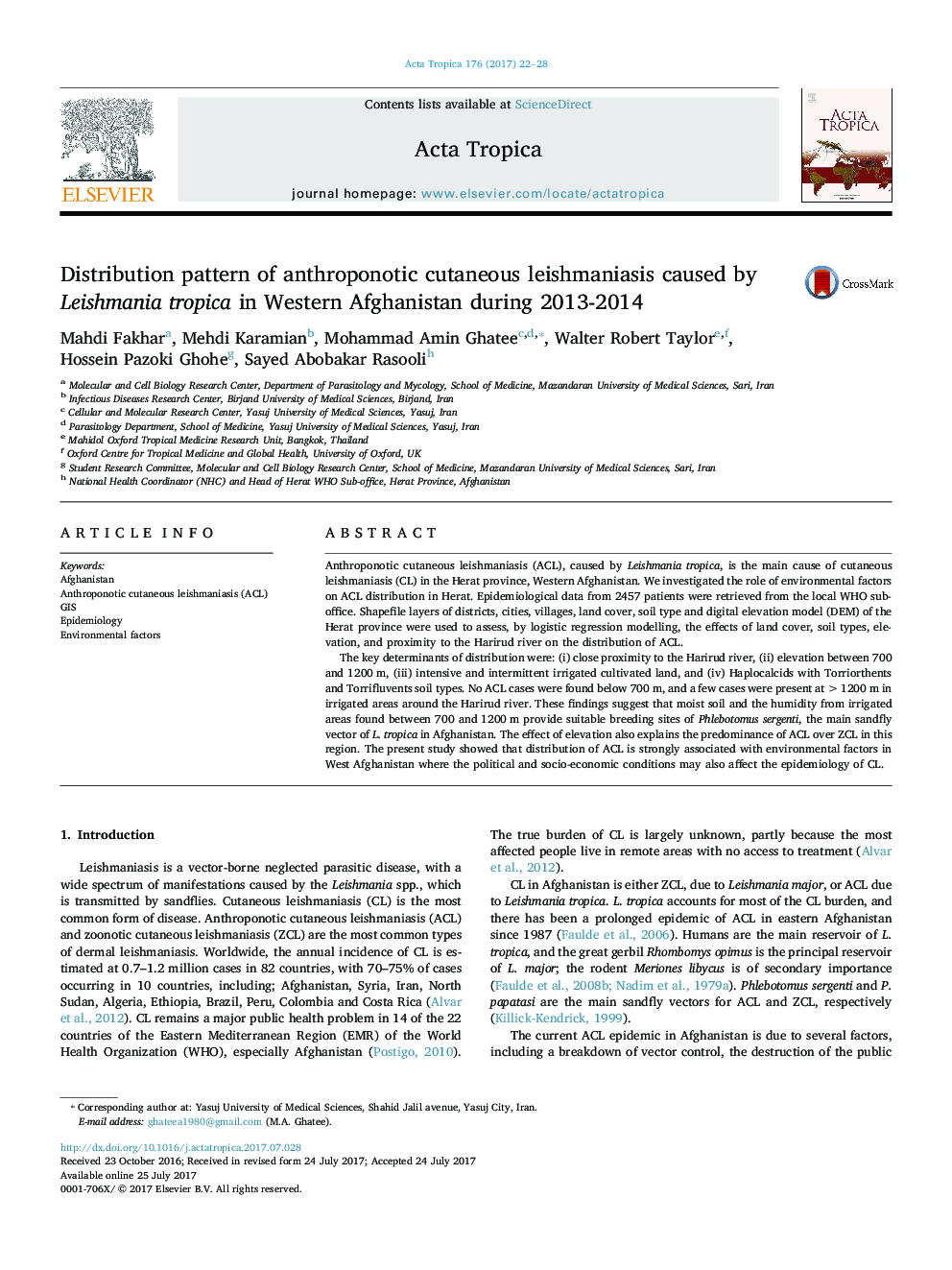| کد مقاله | کد نشریه | سال انتشار | مقاله انگلیسی | نسخه تمام متن |
|---|---|---|---|---|
| 5671013 | 1592748 | 2017 | 7 صفحه PDF | دانلود رایگان |
- ACL caused by L. tropica is mostly distributed in close proximity of Harirud river, West Afghanistan.
- Elevation range 700-1200Â m is one of risk zones for occurrence of ACL in this region.
- Intensive and intermediate irrigated cultivation as the most effective land covers.
- Most ACL points found in haplocalcids with torriortents and torrifluents soils types.
- Detected ZCL patients may be imported cases regarding environmental backgrounds.
Anthroponotic cutaneous leishmaniasis (ACL), caused by Leishmania tropica, is the main cause of cutaneous leishmaniasis (CL) in the Herat province, Western Afghanistan. We investigated the role of environmental factors on ACL distribution in Herat. Epidemiological data from 2457 patients were retrieved from the local WHO sub-office. Shapefile layers of districts, cities, villages, land cover, soil type and digital elevation model (DEM) of the Herat province were used to assess, by logistic regression modelling, the effects of land cover, soil types, elevation, and proximity to the Harirud river on the distribution of ACL.The key determinants of distribution were: (i) close proximity to the Harirud river, (ii) elevation between 700 and 1200Â m, (iii) intensive and intermittent irrigated cultivated land, and (iv) Haplocalcids with Torriorthents and Torrifluvents soil types. No ACL cases were found below 700Â m, and a few cases were present at >1200Â m in irrigated areas around the Harirud river. These findings suggest that moist soil and the humidity from irrigated areas found between 700 and 1200Â m provide suitable breeding sites of Phlebotomus sergenti, the main sandfly vector of L. tropica in Afghanistan. The effect of elevation also explains the predominance of ACL over ZCL in this region. The present study showed that distribution of ACL is strongly associated with environmental factors in West Afghanistan where the political and socio-economic conditions may also affect the epidemiology of CL.
Journal: Acta Tropica - Volume 176, December 2017, Pages 22-28
